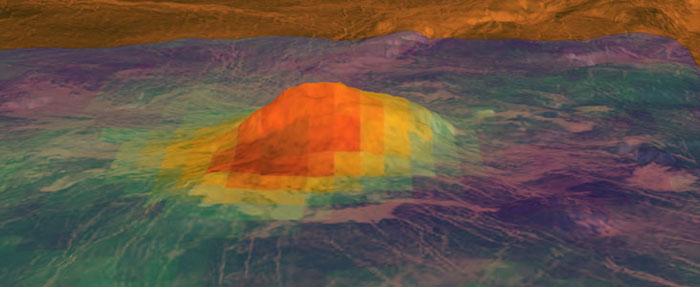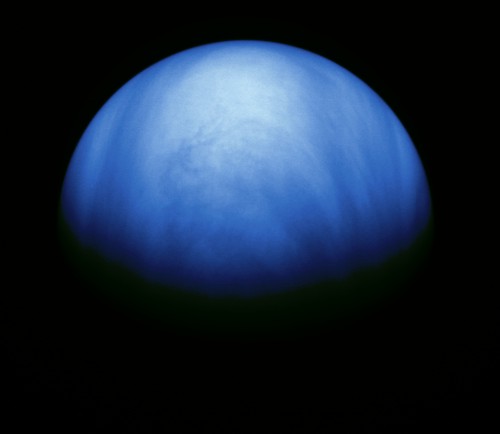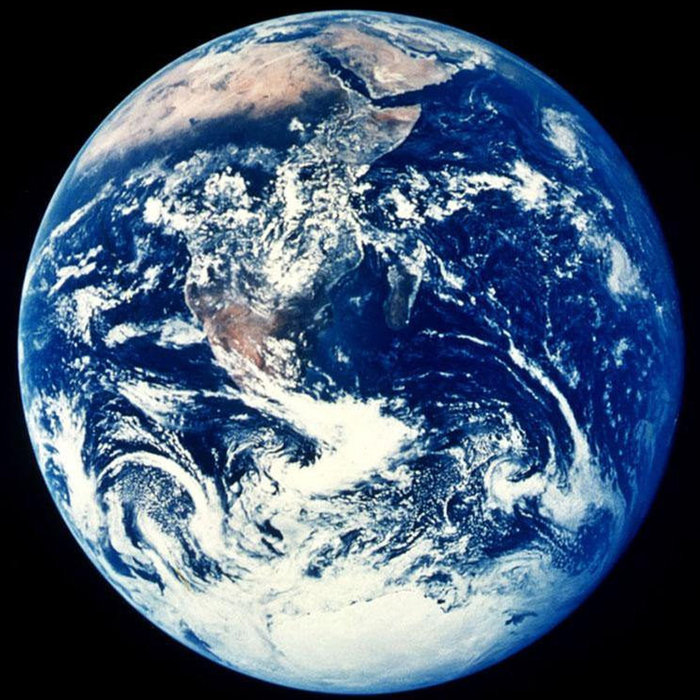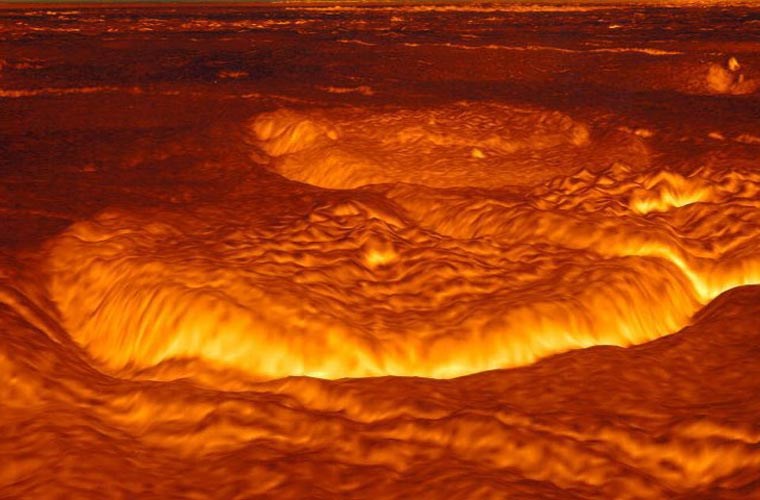10 most interesting things about Venus
Venus, the second planet near the Sun is a pretty amazing star. Discover the strange things about one of the closest "neighbors" to our Green Planet in the Solar System.
1. Many volcanoes

Venus has more volcanoes than any other planet in the Solar System. Astronomers have counted 1,600 volcanoes on Venus's surface, but it is likely that this number will be even greater due to the size so small that we cannot see. Scientists believe that most volcanoes on Venus have fallen asleep, although some may still be active.
2. Days longer than years

One day on Venus is 243 days on Earth (this shows how long a Venus cycle is). Meanwhile, a year on this planet (the time around the Sun) is shorter, only 224.7 days on Earth.
3. Earth's twin brothers?

Among all the planets of the solar system, Venus has the most similar characteristics to Earth. Both planets are nearly the same size and Venus's structure is almost the same as Earth. Venus's orbit is also closer to Earth's orbit than any other planet in the solar system. Both planets have quite young surfaces and all have thick, cloudy atmospheres (however, it should be noted that Venus's clouds are mostly toxic sulfuric acid).
4. Extremely hot

Since most of Venus's atmosphere is carbon dioxide, the phenomenon of extremely large greenhouse gases causes the planet's surface to heat up. The temperature here can reach 870 degrees F (470 degrees C), Venus is the hottest planet in the Solar System. Some scientists have suggested that Venus has had oceans in the past, but evaporated when the planet's temperature increased due to the uncontrolled greenhouse effect. The entire surface of Venus is an arid desert with rocks and dust.
5. Very high pressure

Air pressure on Venus's surface is extremely high, about 90 times higher than the pressure of sea level on Earth . In other words, the pressure on Venus is equivalent to the Earth's ocean pressure at a depth of 1 km.
The Russian spacecraft, Venera , actually landed on the surface of the planet and shot and beautiful images of the harshness on the ground, but with tremendous heat, pressure and other harsh conditions. , the cruise ship did not last long after landing.
6. Venus can be seen from the Earth passing through the Sun.

Venus is among the rare planets that we can observe when it passes through the Sun. The Earth is the third planet of the solar system, so we can only observe this event with two planets, Mercury and Venus. Venus passes through the Sun is a very rare phenomenon, it takes more than a century for a pair to happen, ie two times about eight years apart.
7. The brightest planet

In the Sky Eye, Venus is not the largest planet but its position near Earth makes it the brightest star in the sky. It is also the second brightest object at night after the Moon.
Venus reaches its maximum brightness right at sunset or dawn, so that folk are also called Hom stars (when the planet grows at sunset) and Morning Star (when the planet grows at the average time) smart).
8. Secrets of ancient people

Venus has been the target of human observation for millennia. According to records, from 1,600 years BC, ancient Babylonians tracked the orbit of this planet in the sky. Greek mathematician Pythagoras was the first to discover that the brightest stars in the early morning and in the evening are actually one - Venus.
9. Windy planet

The winds blowing through Venus at super velocity, can reach 724kph in the middle cloud layer. The winds on Venus are faster than Earth's strongest hurricanes. Astronomers say the starburst winds blow so fast that they cause " super spin ", causing the clouds to spin around the planet in just four days on Earth.
10. Venus also has a phase

In the Moon, the phase cycle is 29 days or the moon . Because Venus is orbiting the Sun within the Earth's orbit, the planet also has phases like the Moon. When Venus is in the opposite position from the Sun it is in the most circular phase (like the full moon) and when the planet is between the Earth and the Sun, it is in a new phase (like the first moon of the month). .
The first person to witness these phases was the Italian astronomer Galileo Galilei , in 1610.
- Interesting things about the planet
- Interesting 'meeting' between Venus and the sun
- Overview of Venus
- 10 interesting things about life you may not know
- 10 interesting facts about
- Venus can stay?
- NASA wants to bring people to Venus
- Venus Experss are about to plunge into the Venusian atmosphere
- Venus is about to be a
- 10 interesting things about nature you may not know
- After 8 years of Venus exploration, Venus Express has run out of fuel
- Going from one surprise to the other is different from the interesting things about all things
 Van Allen's belt and evidence that the Apollo 11 mission to the Moon was myth
Van Allen's belt and evidence that the Apollo 11 mission to the Moon was myth The levels of civilization in the universe (Kardashev scale)
The levels of civilization in the universe (Kardashev scale) Today Mars, the sun and the Earth are aligned
Today Mars, the sun and the Earth are aligned The Amazon owner announced a secret plan to build a space base for thousands of people
The Amazon owner announced a secret plan to build a space base for thousands of people